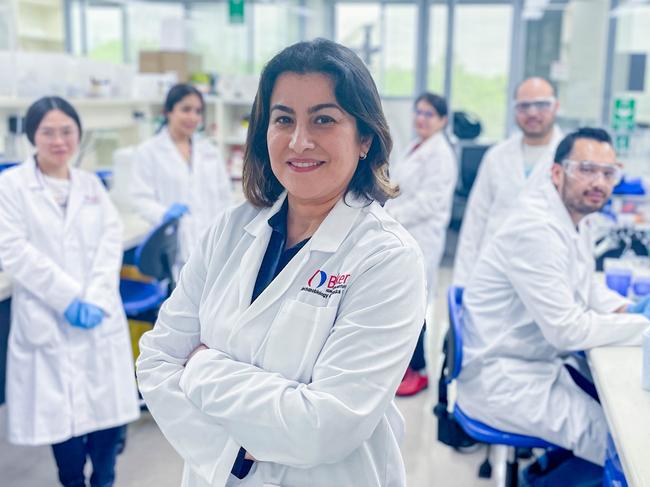Baker Institute team’s discovery on cause of heart disease, stroke
It’s a leading cause of death in Australia but a major discovery in the cause of cardiovascular disease is offering hope for saving lives.
Victoria
Don't miss out on the headlines from Victoria. Followed categories will be added to My News.
Victorian researchers have identified a “major player” in the cause of stroke and cardiovascular disease that offers the potential for lifesaving new treatments.
Cardiovascular disease is a leading cause of death in Australia responsible for one in four adult deaths while about 50,000 people suffer a stroke each year.
The Baker Heart and Diabetes Institute team found that when immune cells inside blood vessels, called neutrophils, expand under pressure they can cause harmful inflammation.
Using medical bio-engineering technology, the researchers have found that this inflammation in human cells can lead to the formation of stroke-causing blood clots and a narrowing of the arteries.
Sara Baratchi is the lead author of the study published on Thursday in Nature Communications.
Associate Professor Baratchi is head of the Mechanobiology and Microfluidics laboratory at the Baker Institute where her research is focused on pioneering artificial models of human blood vessels and heart valves.

She says the team identified a sensor on the surface of these neutrophils that is activated by certain medical conditions such as plaque build-up, including cholesterol or heart valve narrowing.
This narrowing causes fluctuations in blood flow, known as shear stress, and it is this blood flow fluctuation which activates the sensors on the surface of neutrophils.
“When this sensor is activated it can contribute to complications associated with heart diseases like stroke, atherosclerosis — which is the build-up of cholesterol plaque in the walls of arteries — and also aortic valve disease,” she said.
“These immune cells are major players. Our research has proven that high shear stress can activate these cells directly and that can lead to the progression of cardiovascular disease and complications.”
When blood flow fluctuates it leads to a sequence of cellular events, including the activation of neutrophils, which are part of the body’s immune response. This shear stress can then induce a process called NETosis.

This is where the immune cells release weblike structures that trap and neutralise harmful invaders like bacteria, but it is this and the subsequent arterial build-up the researchers found could also contribute to harmful inflammation and blood clot formation.
Associate Professor Baratchi says the team discovered the sensor that helps immune cells sense and respond to this high level of force, or high shear stress.
“This allowed us to also identify what is activated downstream of this sensor that leads to the response of these immune cells.”
She says it will help develop future treatments specific to the immune cells’ response.
“It can potentially prevent complications that are associated with these conditions or, for example, in the case of aortic stenosis or calcification of aortic valves, it could prevent the progression of the valve calcification, which I think is brilliant but that’s the next step,” Associate Professor Baratchi says.

“Potentially this discovery could have a significant impact on the prevention of cardiovascular diseases.”
Having discovered what these neutrophils do, the team now wants to understand why they cause problems in some people, but not in healthy individuals.
“We know when you have a certain medical condition like plaque build-up or calcification in the arteries, those changes in blood flow can activate these immune cells,” she said.
“It’s a condition driven by change in the geometry of the vessels or the valves and the narrowing of the vessels and the valves that can activate these immune cells.”
Associate Professor Baratchi says that if the team can confirm what is controlling these processes, they may be able to prevent the progression of cardiovascular and valve disease.
“At the moment there is no medication for aortic stenosis so that’s why this discovery has the potential to be both life-changing and lifesaving,” she says.
AT A GLANCE
• 50 000 people suffer a stroke each year in Australia
• One in six Australians are living with cardiovascular disease (CVD)
• About 1.2 million adults have at least one condition related to CVD
• As much as 90 per cent of CVD may be preventable with education and action




